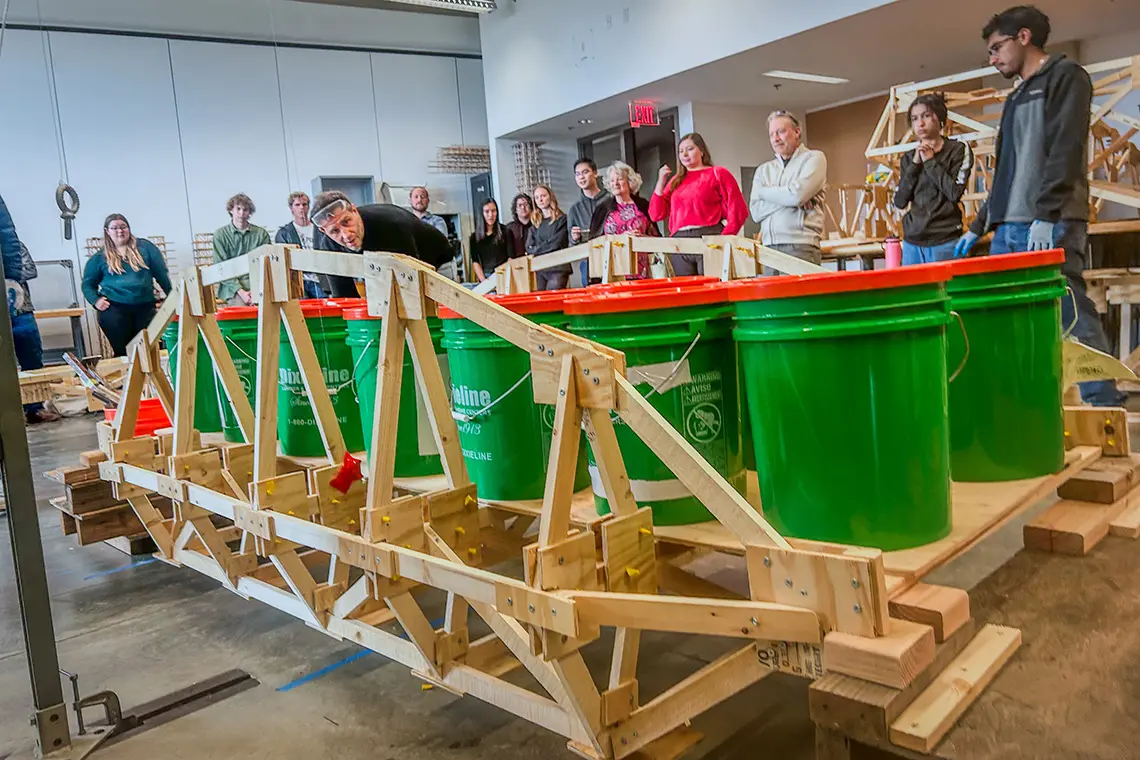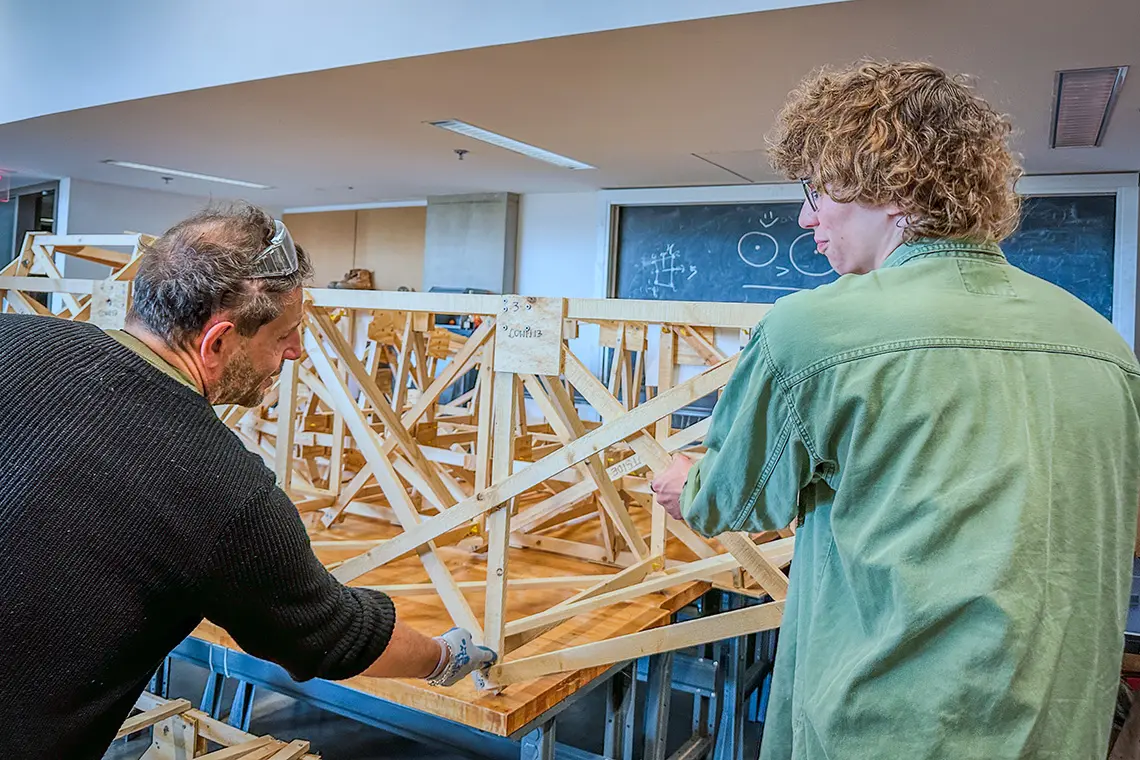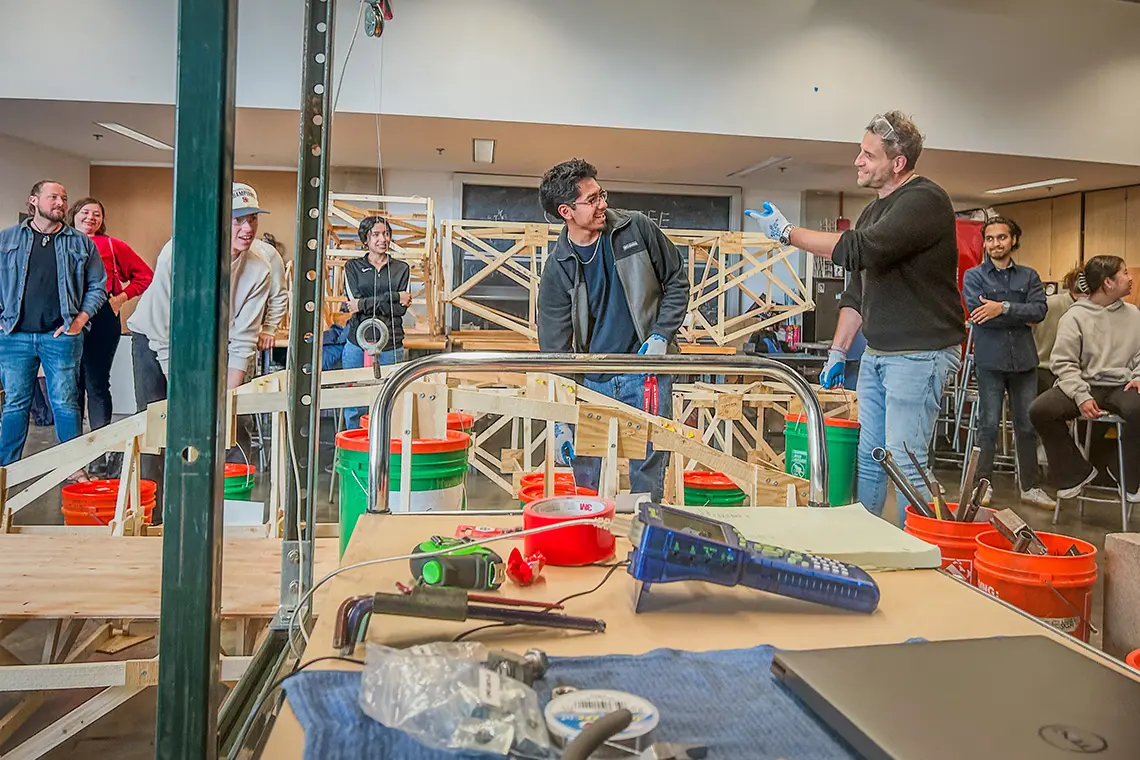Literally Building Bridges to Learn in New Structural Engineering Class
Structural engineering students design, build and test timber bridges and learn cutting-edge techniques
Published Date
Article Content
What does it take to build a small timber bridge that can carry 1000 lbs of weight? Six teams of structural engineering master’s students got to find out during the final weeks of their Advanced Timber Design course this quarter.
The new class, taught by Professor Alessandro Palermo, introduces master’s students to cutting-edge principles of cross-laminated timber design and construction. This material is increasingly popular in architecture and construction as an alternative to concrete and steel but not yet widely used in the United States.
The students conceptualized the design of their timber bridge, refined the details and then built the structure. After testing, they took the bridges apart and repurposed them for other uses. It’s the first time the class is offered to include construction and a friendly competition.
“Students learn to appreciate and understand the challenges that come up during the design and building process. They learn to make decisions on the spot to adapt the design to real-life construction challenges,” said Palermo, a professor in the Department of Structural Engineering at the UC San Diego Jacobs School of Engineering.

The class also teaches students to work in teams, he said. They learn how to use resources and work with people with different skill sets, so that they also learn soft skills. They then take the skills they learn into industry, where many of them are landing jobs.
Carsten Huber, a master’s student, has already secured a job with a structural engineering firm in Long Beach, Calif. He was particularly excited about the cutting-edge technologies he was learning about, he said. “This is a new style of construction in the United States, and it’s cool to dig into new design guides and codes. It’s really fun,” he said.

Lioncino Mata, another student in the class, said he learned how design needs to be flexible to accommodate construction—the very lesson Palermo wants to impart. “It helped me realize how constructability can affect design,” he said.
In industry, understanding what’s feasible is key, said master’s student Alessandra Kuesel. The class taught her this, as well as the basics of cross-laminated timber design.
Six teams of students designed six bridges in four sessions of three hours each. Once completed, the bridges had to pass four different performance tests, including bearing 1000 lbs of weight, distributed among buckets full of sand. In the end, five of the six bridges successfully passed in all four tests. The sixth bridge couldn’t properly be tested in class conditions due to its arch design.

Finally, students disassembled the bridges to turn them into bookshelves, standing desks and more. “These creations will be put to use by the teams themselves, proving that sustainability and circularity in timber design are not just concepts, but actions,” Palermo wrote in a LinkedIn post.
Students also wrote a report analyzing their bridge’s performance, which they presented to classmates.
Palermo is already planning for a bigger competition next year which may go beyond UC San Diego to include other San Diego higher education institutions. “The students have been incredible—the energy, laughter and empathy shared today will remain in their and my memory for a long time,” he wrote.
The class was sponsored by Think Wood and Rothoblaas.
Share This:
Stay in the Know
Keep up with all the latest from UC San Diego. Subscribe to the newsletter today.



